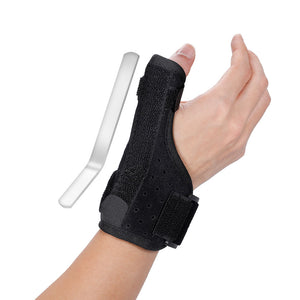Potential Harms of Long Distance Running

Long-distance running is not only an effective manner to get strong, stay healthy and even lose weight, but it's also a highly desired sport. Iike all sports, long-distance running is associated with definite risks that can lead to sports injuries. In this article from Fivali, we will discuss several precautions you can take to ensure a safe and happy experience.
Dehydration and Heat Exhaustion
To stave off dehydration and heat stroke, stay hydrated right before, during, and after your workout. Drink one full glass of fluid every 15 minutes throughout the hottest period of the day (often between 11 a.m. and 3 p.m.).
During running, if you feel dizzy or weak, decelerate and slow down for a few minutes, then move to a shaded area for rest until your symptoms have completely disappeared. If your Symptoms do not relieve within 15 minutes, please call 911 immediately as in this case you may be experiencing symptoms of severe dehydration or heat exhaustion.
Low Blood Sugar
Please have glucose tablets on hand before your long run. During rigorous exercise, the body consumes a great deal of sugar, which is prone to hypoglycemia if not replenished sufficiently. Once dizziness, nausea and other symptoms occur, glucose tablets can be taken in time to quickly replenish blood sugar. In addition, the reasonable diet, pay attention to the intensity of exercise can also be effective in preventing hypoglycemia.
Muscle Strains
Muscle strains are one of the most common running injuries which are usually the consequence of over-exercise or dramatically increased training volume. When muscles are pulled beyond their capacity, they can be partially or completely torn. Muscle strains are most commonly found in the quadriceps and hamstrings, but can occur anywhere in the body.
If you keep feeling pain while running, it is important to take action as soon as possible to avoid further injury. Allowing the damaged leg or hamstring muscle to rest will help them heal faster, and icing can reduce the swelling and inflammation that can lead to pain. Stretching exercises can also help to increase flexibility in the damaged area, allowing you to return to activity safely - but check with your doctor first!
Knee Pain

Knee injuries are a common nuisance for runners, and ligament strains are a common cause. Strained ligaments may lead to knee pain, swollen, and even impact the stabilization of the knuckle. Once joint discomfort develops, you should stop exercising and consult a doctor for an examination so that treatment will not be delayed.
During practices and games, it is important to don compression knee sleeve and compression pants with built-in support panels to protect the knee joints. Warm up and stretching before and after workouts can boost joint flexibility and lower the risk of injury. Furthermore, opting for a proper pair of running shoes and refraining from running barefoot on hard surfaces can also provide protection.
Long-distance running is an extremely popular sports, which not only provides us with help to stay healthy, but also relieves stress. However, long-distance running can carry a few health problems, such as sports injuries and over-training. There are certain things we need to realize and take certain action in order to enjoy the fun of running safely.













